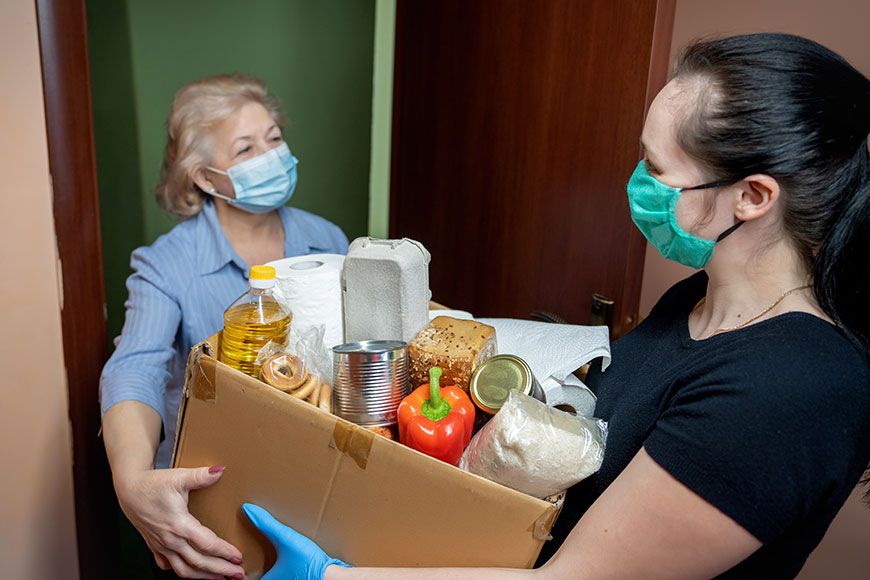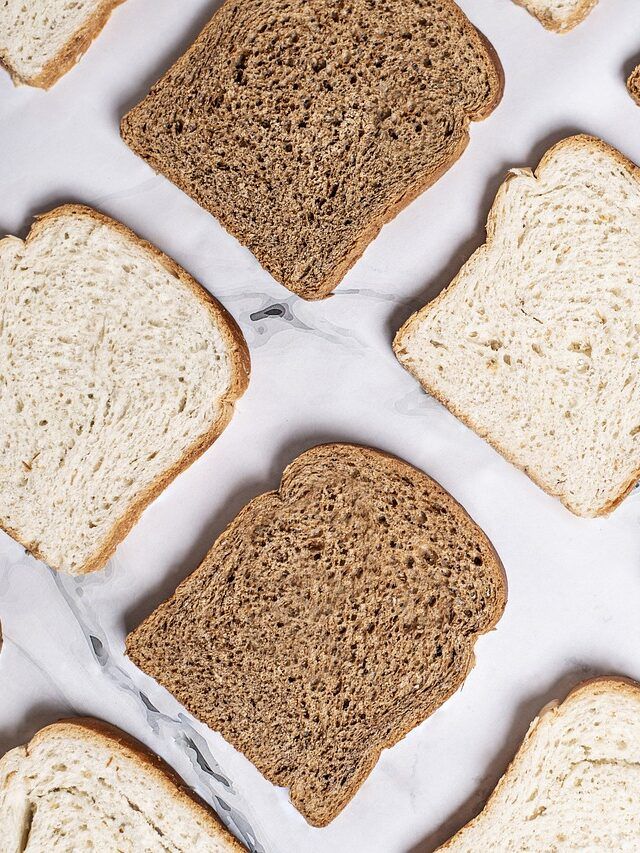Nutrition is a big part of healthy aging. However, several factors might cause one to fall short of funds after retirement, including medical expenses. Food assistance programs for seniors such as SNAP, SFMNP, mobile pantries, and CSFP aim to offer nutrition through food to as many seniors as possible. Such initiatives work to provide nutritionally balanced meals to people in need.
Types of food support programs
Here are the most popular types of food resources and support programs you should know about.
Medicare $900 grocery benefits
If you’ve heard your family and friends talk about getting free groceries under the Medicare 900 plan, understand there’s much more to it. If you are a member of Medicare, then you might be eligible for several benefits you haven’t used at all. The main reason these services are left unused is that most Medicare users are unaware the benefits exist. You might also be unfamiliar with it if you were initially enrolled only in Original Medicare.
Is there a $900 grocery card?
Like many other seniors, you may have heard about Medicare’s $900 grocery offers for those over 60 or some related variant or amount. The Medicare Advantage Plan constantly adds new benefits. However, the Medicare food allowance benefit usually goes above and beyond most available programs. A couple of plans under the Medicare umbrella pay $10 up to $120 monthly in healthy food grocery cards.
Several promotions run on TV claim to offer unrealistic Medicare grocery benefits. And all they ask you to do is dial a toll-free number and check if you qualify for up to $900 in free groceries and meals. And while the plan has certain advantages, it might be misleading to think everyone is eligible for the benefit. Original Medicare and Medigap policies do not offer meal delivery or grocery benefits. But some Medicare Advantage HMO and PPO plans do offer such advantages. Some newer benefits include vision care, dental care, and transportation to medical appointments.
However, only some plans offer grocery or meal benefits, and only a few people can avail of them. It does not mean that you should not apply for the card.
Learning about the functioning of the Medicare grocery card
Being able to afford high-quality food on a fixed benefit has become a problem for many senior citizens nationwide. Several seniors with Original Medicare might also miss out because of their limited Medicare contract. Therefore, to address the problem, many providers are making high-quality food available for older adults on Medicare.
Providers that participate in the program send qualifying seniors a prepaid debit card, also known as a flex card, for food. The card is known by various names, including-
- Medicare food card
- Medicare Advantage food benefits
- Medicare grocery benefit 2022
- Medicare grocery card
- Healthy Foods card
- Grocery Plus
- Medicare food allowance benefits
- Grocery Plus Benefit Card
- The 2022 OTC Healthy Food Benefit
The Medicare Grocery Plus card provides a monthly, quarterly, or annual allowance, depending on the provider. You can spend this allowance on buying healthy groceries from participating retailers. Some providers may also allow you to place online orders to deliver groceries to your doorstep. To know if you qualify for Medicare food delivery services as part of your Medicare food benefit, ensure that you check with your Medicare Advantage provider.
Qualifying for the Medicare Grocery Plus benefit
Most providers require you to enroll in a plan that provides supplemental advantages to qualify for the grocery benefits. In the case of other providers, you must be diagnosed with a chronic disease to be eligible for the plan. A few chronic diseases that qualify for eligibility for this grocery benefit with some providers include-
- Certain cardiovascular diseases, including, but not restricted to, cardiac arrhythmias, coronary artery disease (hardening of the arteries), chronic heart failure, and chronic venous thromboembolic disorder (blood clots in the legs)
- Certain autoimmune disorders, including, but not restricted to, systemic lupus erythematosus, rheumatoid arthritis, and polymyalgia rheumatica
- End-stage renal disease (ESRD) that necessitates dialysis
- Cancer
- Prediabetes
- Dementia
- History of strokes
- Diabetes mellitus
- Certain mental health disorders
Terms of the Medicare grocery card
Most food resource and support programs for seniors have terms you must follow. For example, you cannot buy just any food type with your Medicare healthy foods card. The choices available include healthy foods approved for purchase by the insurance provider. A few foods you can buy with the Medicare Food Benefit Card include fruits and vegetables, meat and seafood, beans and healthy grains, cereals, dairy products, frozen meals, and staples such as flour, spices, and sugars. Furthermore, the benefits can only be used at select grocery stores approved by the insurance provider. While the food card is redeemable at most grocery outlets, some stores may not accept it. You should also remember that the balance on the card does not carry forward from one month to the next or to a new benefit period. So if you have any unused allowance from prior months, it will expire. You are only entitled to the benefits for the ongoing month.
Applying for Medicare healthy foods card
When you pick a Medicare Advantage plan, it may offer provisions for free groceries for seniors on Medicare, which could help you save a good amount of money on monthly expenses. These plans allow you to enjoy grocery benefits, so ensure you take advantage of them. To apply for grocery benefits, contact your carrier to confirm your eligibility. Remember that some providers require you to be diagnosed with a chronic health condition to receive these supplemental benefits. Other providers might also need you to enroll in Medicare and Medicaid.
If you qualify, the provider can help you apply for the grocery benefit. It won’t be long before you save money while picking up healthy, nourishing foods on your next trip to the grocery store. To get information on all things related to Medicare, you should contact Medicare.gov or 1-800-MEDICARE.
Senior Farmers’ Market Nutrition Program (SFMNP)
The Senior Farmers’ Market Nutrition Program (SFMNP) is among the many food assistance programs that give coupons to low-income seniors that can be exchanged for eligible foods. A few options include fresh-cut herbs, honey, vegetables, and fruits. The groceries are available at farmers’ markets, community-supported agriculture (CSA) programs, and roadside stands. State agencies like the State Department of Agriculture or Aging administer the program. You should note that not all States operate the SFMNP statewide.
The SFNMP is tasked with serving low-income seniors. To be eligible for the program, you should be at least 60 years old and have a household income of not more than 185% of the U.S. Poverty Guidelines published every year by the Department of Health and Human Services. Some State agencies may accept proof of participation or enrollment in another means-tested program, including the Supplemental Nutrition Assistance Program (SNAP) or Commodity Supplemental Food Program (CSFP), for SFMNP eligibility. To check if you qualify for SFMNP benefits, contact your area’s state agency.
Commodity Supplemental Food Program
Now let’s take a look at the Commodity Supplemental Food Program (CSFP). It offers seniors healthy foods through monthly senior food boxes. The CSFP serves over 600,000 seniors with incomes at or below 130% of the Federal Poverty Line, which is about $15,301 for a senior living alone. The program helps vulnerable seniors to pick between food and other essentials. CSFP stands out because it offers more than just food and nourishment. The program focuses on combating poor health conditions often diagnosed in seniors who experience food insecurities. Therefore, the food packages are designed specifically to supplement nutrients that you might lack in your daily meal plan. The foods provided by the program may also help you avoid expensive hospitalizations and nursing home placements.
USDA Commodities and CSFP
Since the CSFP is a discretionary program funded annually through the federal appropriations process, its reach to eligible participants is limited to the funds allotted during that time. CSFP also offers USDA commodities and administrative funds to States. The initiative also stores and transports the food to local agencies for distribution to low-income seniors. It is also the only USDA nutrition program offering monthly food assistance, especially for low-income seniors. So, the $27 cost to USDA for providing commodities accumulates into a monthly food package with an average retail value of $50.
As a senior, you should note that most participants in this program pick up their monthly CSFP food packages at a food bank or from a local sponsor. You may also have an authorized individual pick up your food package for you. Moreover, some communities may deliver the food package directly to the participant’s doorstep, which benefits especially older individuals with limited mobility.
To qualify for the program, you must be at least 60. You may also be required to be at or below 130 percent of Federal poverty income guidelines. Your State may also require you to be at nutritional risk, as determined by a physician or local agency staff. Some States may require that seniors reside within the service area of the local agency when they apply for the program’s benefits. However, this does not mean you are required to stay within the area for any fixed amount of time.
SNAP
Supplemental Nutrition Assistance Program (SNAP) is another senior-oriented food assistance program you should consider. It is one of the largest domestic hunger safety net programs that help you pay for food and manage good nutrition as you age. The initiative could help you stretch your budget further because the money you would have spent on food could be saved and repurposed towards other critical requirements, such as medical bills, prescriptions, and utilities. The benefits of SNAP are transferred to recipients via an Electronic Benefits Transfer (EBT) card. You can use a prepaid food card, like a debit card, to purchase eligible food in most grocery stores and other retail stores that sell food. Furthermore, you could also use the cards across farmer’s markets throughout America who participate in SNAP.
With a SNAP allowance card, you can purchase food items like vegetables, fruits, meat, fish, poultry, cereals, dairy products, snack foods, and non-alcoholic drinks. You can also use the SNAP program to purchase seeds and plants to grow food for your household. Certain rules indicate what you cannot purchase with a SNAP card. Products like tobacco, alcohol, vitamins, supplements, and other non-food items (including pet foods) are not eligible under SNAP.
Remember that SNAP assistance is available to young families or older adults living independently if they meet the eligibility criteria. Furthermore, each State has different criteria for qualifying for the program. You need to meet a certain threshold for household income and have household assets below a certain amount.
If you are struggling to pay for daily expenses, like food, or know someone who is, you could use NCOA’s free tool to connect you with help. With the help of BenefitsCheckUp.org, you can browse for programs that could save you money by entering your ZIP code and the category of interest. You could also submit additional information to help determine if you are eligible for assistance, including SNAP. The program may look into the size of your household to determine the type of food benefits you are eligible for. A household is defined as “everyone who lives together and purchases and prepares meals together.”
The SNAP income guidelines for 2023
There is a limit to how much income you earn to be eligible for food stamps. So keep these rules in mind. If you are an adult over 60 and/or live with a disability, your household generally must meet the following conditions when applying for SNAP.
- Your net income should be less than or equal to the federal poverty line (FPL)
- Your assets amount to $4,250 or lower.
It is also important to understand how income is calculated. Your net income is your gross income minus any acceptable deductions. Assets are “countable resources,” which include money in a bank account, cash, and a specific vehicle. For example, for the fiscal year 2023, a two-member household with a net monthly income of $1,526 (100% of poverty) could qualify for SNAP. You should also remember that several allowable deductions, including those for extra healthcare expenses, may help you meet the net income test. Furthermore, several assets, including your home (if you own one), will not be considered for the $4,250 limit.
If the eligibility criteria are difficult to understand, there are experts at every SNAP office who can help you understand the program’s rules and requirements.
Do seniors living with children or other family members qualify for SNAP?
As you get older, it might become challenging to live alone, and you might decide to move in with your children or other family members. Even in this situation, you may qualify for SNAP assistance. Under the special program provisions, you (and your spouse, if applicable) may qualify as a separate household if you are over the age of 60 and are unable to purchase meals due to a disability. You may also be eligible if you cannot prepare meals due to physical limitations. However, collectively, the other members of your household will still need to meet SNAP income limits. In this situation, they must earn no more than 165% of the federal poverty level.
What can you purchase using SNAP benefits?
While nutritious foods are important in maintaining good health as we age, quality food is often expensive, making it very difficult for older adults to afford. Moreover, in 2021, the United States Department of Agriculture (USDA) revised its method to calculate SNAP benefit payments to reflect the actual price of food items. The department also addressed common obstacles people face in maintaining a healthy diet. As a result of such changes, households participating in SNAP gained better purchasing power in the fiscal year 2022.
More than one-quarter of participating SNAP households across the country include adults over 60. In some States, the participation rate is close to 40 percent. Therefore, if you think you meet the eligibility requirements for SNAP assistance, you should apply for it.
The average SNAP benefit for older adults in the country is $105 per month. You can use this money to purchase fresh, healthy foods and beverages that are non-alcoholic. These will be available at convenience stores, supermarkets, and farmer’s markets. In addition, since SNAP makes it easier to access healthy foods, it could also help you maintain your well-being and independence in various ways.
Food banks and mobile pantries
Besides initiatives like SNAP, CSFP, and SFMNP, you could also look into support through food banks and mobile pantries. These programs offer free food for seniors, low-income families, disabled adults, and other needy individuals in every State and city. The objective of food banks is to ensure that people in need can receive their food in a more relaxed manner by avoiding too much crowd. If you cannot go outdoors due to an age-related disability, the food bank may deliver the meal to your doorstep. Home delivery and fixed hours do not apply to all food banks, and it depends on the specific policy of each food pantry. You may have to look at your local food pantry’s policies and qualify for free food to avail yourself of the service. Dial 211 if you need help getting details of your region’s local food bank or pantry.
Meals on Wheels
This organization aims to support seniors in extending their independence and health as they age. The initiative is coordinated by 5,000 independently-run local programs across the country. The program’s success comes through the organization’s dedication to providing funding, education, leadership, research, and advocacy support to its local member programs, which help strengthen their communities. A trained delivery professional ensures you receive your meal on time. The fact that the professional comes over to deliver the food will also ensure that a quick safety check is done to see that you are well at home and staying in a good and secure space.
The program mainly serves adults aged 60 and above. However, the food is given to seniors on a sliding-scale payment schedule, which depends on the receiver’s ability to pay. Because of this, some seniors may pay nothing for their meals while others might pay a modest fee of around $3 per meal, but even this can be covered under food stamp benefits. While the Meals on Wheels program aims to provide free food for as many seniors as possible, sometimes there might be delays in getting your meal. This is because certain states have more seniors, which means the demand for free food is higher than the available supply. So, you might be put on a waitlist before accessing the nutritious meal. Meals on Wheels also ensures frequent in-home visits by its professionals to identify your nutritional needs, tackle social isolation, focus on safety hazards, help resolve them, and deliver holistic care.
A typical home-delivered meal from the program meets the dietary guidelines laid down by the Older Americans Act Nutrition Program. The meals are also designed to meet healthcare requirements and a senior’s cultural preferences. According to the organization’s website, 9 out of 10 individuals claim the initiative helps them live independently. Furthermore, 2 out of 3 people report that their meals make up half or more of all the food eaten on a specific day.
Congregate meals programs
If you are looking to meet new people besides seeking nutritional support, consider looking for congregate meal programs. To qualify for a congregate meal program, you must be 60 or older. Such community-based initiatives offer opportunities for older adults to engage in services and programs to improve their lives. Some focus on facilitating good social connections, and others support good nutrition. A congregate meal program organizes both these goals at the same time.
If you sign up for this program, you will receive delicious and nutritious meals through accessible group settings at least once daily. The meals are usually distributed in settings like schools, senior centers, churches, farmer’s markets, restaurants, and senior housing facilities. The meal usually consists of a hot lunch, but they might also offer breakfast and dinner. The menus focus on meeting USDA dietary guidelines and may also reflect the cultures of your surrounding neighborhoods. Furthermore, most programs offer options that cater to dietary restrictions, including gluten-free or diabetic-friendly. You may also be eligible for transportation if you need it to ensure that no meal is missed.
Besides these, you may also be eligible for other services that help boost your health and well-being. These services include wellness checks, fall prevention education, and information on managing chronic diseases.
Payment for congregate meals
There are no set fees for meals provided at congregate sites. But as a participant, you could make small donations to help support the program costs. The rest of the funding comes through a government initiative called the Senior Nutrition Program. Financed by the Administration for Community Living (ACL), the program offers grants to States to help them deliver nutrition services for older residents. The ultimate goal of the Senior Nutrition program is to curb hunger, malnutrition, and food insecurity. The other goals of the program are to promote social engagement and support the overall health and well-being of older individuals.
Locating a congregate meal site
To find a meal site in your area, contact the local Area Agency on Aging (AAA). The department could help you figure out the service and location that is most convenient for you and also work on special needs, including rides to and from the meal site. Furthermore, to find the nearest AAA, visit the Eldercare Locator website and enter your zip code.











There are no comments yet